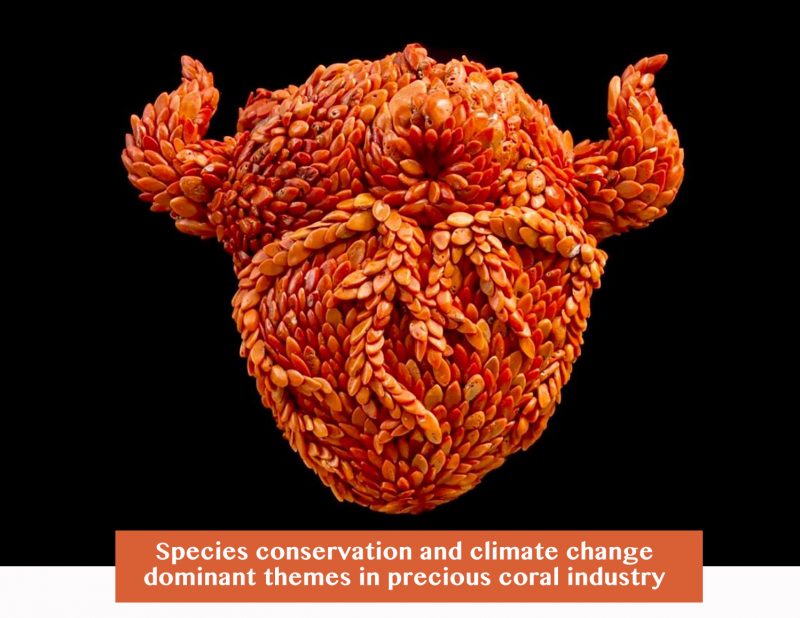‘Heart,’ carved from Mediterranean Coral (Carallium rubrum) by Jan Fabre. From the Liverino Collection, Torre del Greco, Italy. It was the first time that coral was used as a primary medium in a contemporary piece by the renowned artist. © Jan Fabre 2019
NOVEMBER 6, 2019
With fewer than two weeks to go to the opening of the 2019 CIBJO Congress in Manama, Bahrain, on November 18, 2019, the ninth and the last of this year’s CIBJO commission Special Reports has been released. Prepared by the CIBJO Coral Commission, headed by Vincenzo Liverino, the report is dominated by environmental topics, and in particular the efforts by the industry to address the impact of global warming. It also reports on the worldwide effort to protect biodiversity and the various coral species.
As the report notes, no precious coral species are considered endangered by CITES, the Convention on International Trade in Endangered Species, although four varieties are listed in Appendix III, which requires the relevant authorities in each country to determine that specimens were acquired legally. The four Appendix III-listed precious coral species are Aka or Oxblood coral (Corallium japonicum), which lives in Japanese waters; Momo or Angel’s Skin coral (Pleurocorallium elatius), which can be found off the coasts of Japan and Taiwan; Pure White or Shiro coral (Pleurocorallium konojoi), which lives in Vietnamese waters; and Midway coral (Corallium secundum), which lives mainly off the coast of the U.S. State of Hawaii.
In the report, Mr. Liverino writes about a CIBJO initiative involving the identification of precious coral species using new DNA sequencing technology. This is being done in cooperation with the Federico II University in Naples, Italy, and in particular with the support of Professor Di Cosmo. DNA fingerprinting, the Coral Commission President explains, will allow members of trade to comply with current environmental legislation and international regulations, and also to meet conservationist concerns in the consumer markets.
The special report also discusses carbon-14 dating of precious coral and a range of educational tools that have been developed by the Coral Commission for use in the industry.
Concluding the report, Mr. Liverino urges members of the sector to sign on to CIBJO’s Jewellery Industry Greenhouse Gas Measurement Initiative, as part of the worldwide effort to address the devastating effects of global warming. “It is essential that industry recognize that carbon neutrality requires more than simply awareness, but actions as well. Carbon auditing is a first step and the CIBJO initiative in an important support mechanism,” he writes
To download a full copy of the CIBJO Coral Commission’s special report, PLEASE CLICK HERE.


